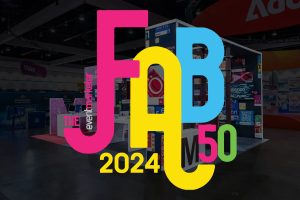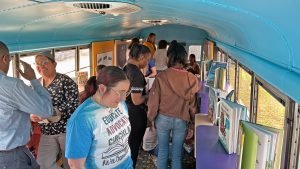Most museums are required to seek competitive bids for a new museum exhibit or major refurbishment. Issuing an RFP (request for proposal) is one of the first steps in the process. You’ll want to identify a fabricator with the proven processes, experience in your area, and the right price to ensure a successful project.
It is incredibly frustrating to receive an incomplete, unclear, or unorganized response. And in many cases, you will rule these submissions out. Luckily, simple things like creating checklists, establishing reasonable deadlines, and refining RFP copy is an easy fix. To receive the best answers from potential partners, these guidelines from our team of museum experts will help you formulate questions that will capture what you need, right off the bat.
CHECKLISTS AND FORMATTING
Naturally, multiple pieces of information will likely be a requirement. The best way to acquire this information is by including a checklist with the RFP, which will help potential bidders organize all the required elements for submission. An excellent list may include:
- Contact Information
- Signature Page
- Execution of Proposal
- Conflict of Interest or Disclosure Statement
- Pricing Proposal
- Subcontracting Plan
- Company Information
- Outline of Project Approach
- Experience and Qualifications
- Sample Work
- References
- Evidence of Financial Responsibility and Stability
In many instances, submission isn’t as simple as sending an e-mail. The fabricator may be required to submit via mail, e-mail, or through a database. If you’re providing a checklist, be sure to include the method the RFP is to be submitted along with the number of copies. Be sure to clarify the time bids are due, especially with regards to time zone.
The most natural format to digest is an outline. Theresa Hirt, Marketing Coordinator for Exhibit Concepts, finds this to be the most efficient format for both the museum and fabricator. “With an outline, I can create the RFP in the format a museum wants to a T. It allows the fabricator to follow the flow of the document, which will better match the ask. On the museum’s end, it’s much easier to read and find specific information,” said Hirt. If submitting an outline, it’s best to assure that page limitations are within reason of what respondents might provide.
Providing your fabricator with how RFP responses will be evaluated or weighted will also help you acquire the best information, or help the fabricator determine if they’re eligible to bid for your project. “Ideally, a point system is the best way to help your fabricator understand how they’ll be evaluated or weighted against other potential bidders. Including what the advantages are, such as being woman-owned or needing the fabricator to be located nearby your museum helps us determine whether or not it’s a viable project,” said Steven Lowry, Account Executive for Exhibit Concepts.
DEADLINES
Giving your fabricator a deadline to submit their RFP is a no-brainer, but other factors must be considered.
If a mailed, hard-copy of your RFP is required, the deadline should be padded with a reasonable amount of time for delivery. You need to account for when delivery services arrive to pick up items, as well as the varying times and days in which services will deliver to your home base. Another factor to consider is that potential fabricators will have questions for YOU! Providing the respondent enough time to ask questions as well as time for relevant parties to answer should be built into your deadline. Accounting for this time will only result in better, more precise answers for your team to review.
Finally, it is best to avoid setting a deadline the day before or after a holiday. Fabricators will be working to wrap-up other projects before closing for the holiday. Allowing more time near a holiday will ensure you receive all necessary documents on the deadline with no hiccups.
Traditionally, RFPs are given a deadline anywhere from four to eight weeks from the issue date to ensure all required items are prepared and that there is a buffer for delivery, if needed.
CLARITY
“To be clear is to be kind” is something we preach in our office. When it comes to RFPs or RFQs (request for quotation), transparency is critical.
It should be evident to the exhibit fabricator what the budget and scope of work will be. Knowing these details beforehand will help the fabricator determine whether or not the project is viable for their business to pursue. Allowing the exhibit fabricator to vet the project beforehand saves time for both parties if it isn’t feasible.
Your museum’s mission statement and what the exhibit is trying to accomplish is also crucial information. “This helps the fabricator formulate the best way to move the project forward and provide exactly what the museum wants. It’s incredibly helpful to have this information included in the RFQ submission,” said Lowry.
Before submitting your RFQ, take extra time to review each question and its purpose. In many RFQs, the same information may be required multiple times. Check to make sure that questions are not duplicated to avoid a headache on both ends.
A contract is also a beneficial component of an RFP. Including this important document with the submission helps your fabricator round-up all of the necessary legal information, such as bonding or insurance documentation. Also, if there are special requirements, the fabricator needs to know up front to assure that they will be met. A contract ultimately helps a fabricator determine if they’ll be able to enter the bid.
Setting reasonable expectations, deadlines, and providing your fabricator a clear scope of the work will result in receiving all the information you’ll need to make a decision. The RFQ process is also a sneak peek into how you and potential partners will work together through each phase of your exhibit.
You have incredible stories to tell. Seeing how your fabricator will tell their story with clarity, accuracy, and attention to detail will show you what value they’ll bring to your space.










